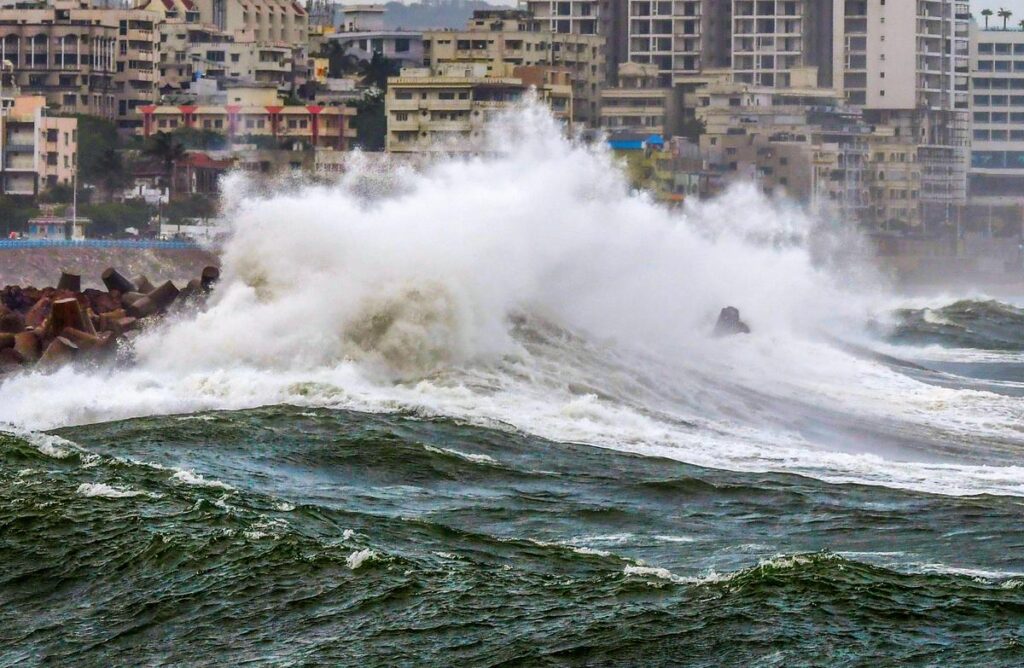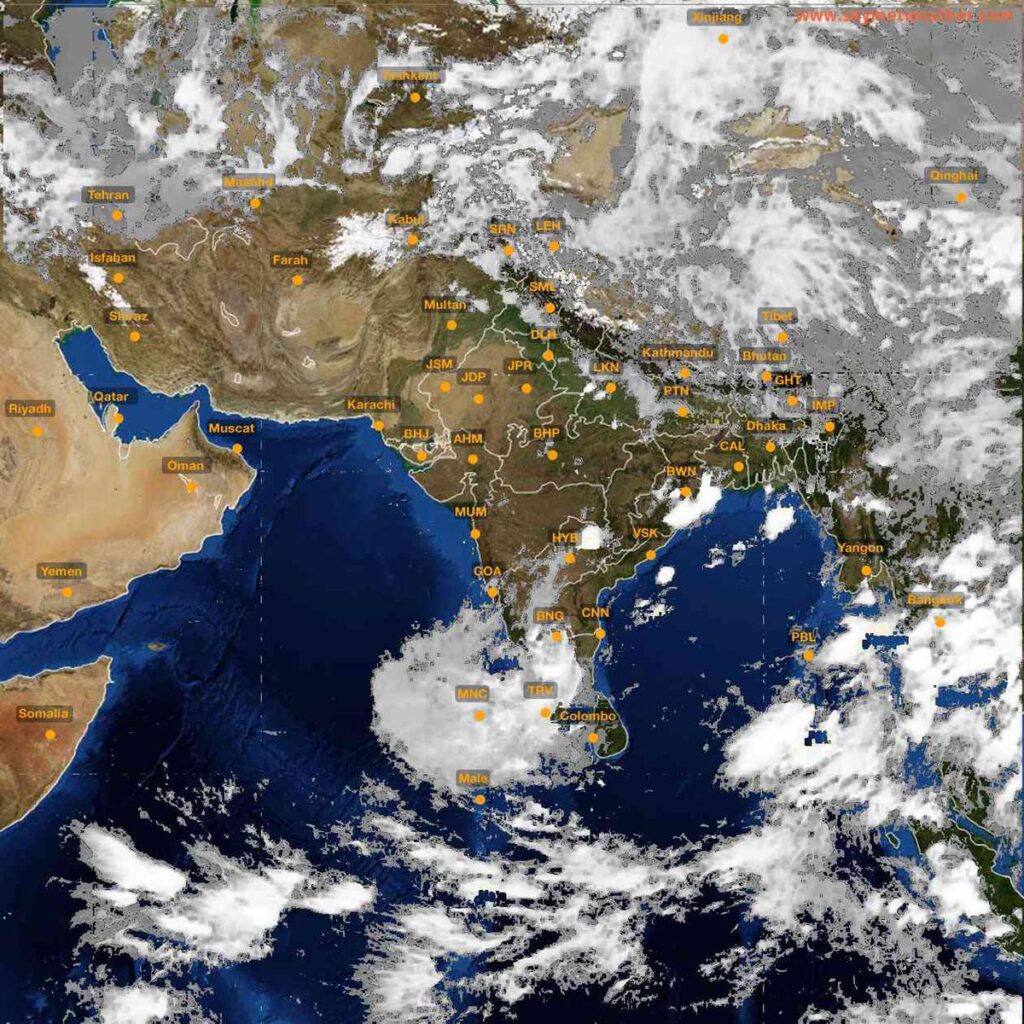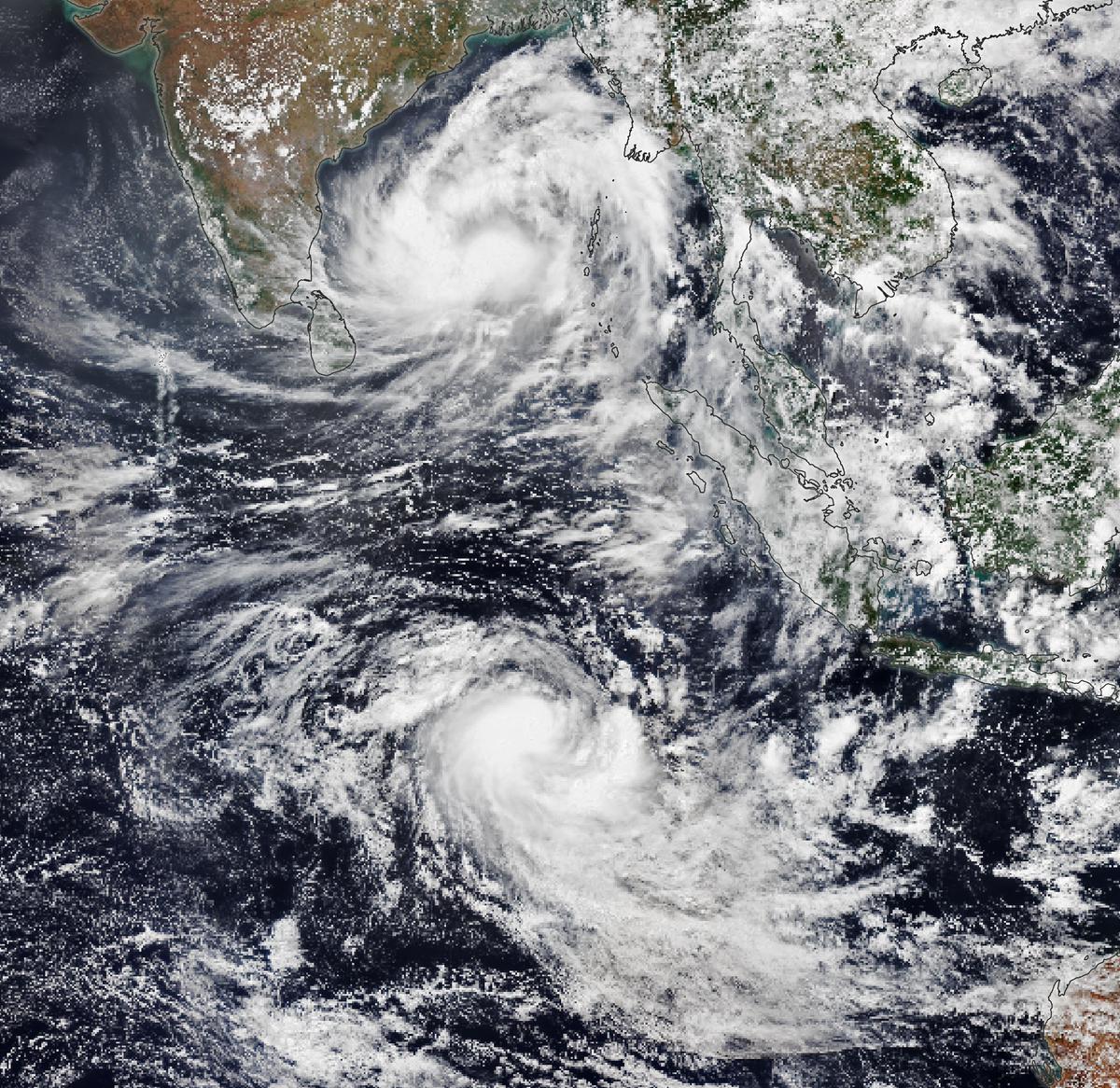A pair of cyclones, one in the northern hemisphere and one in the southern hemisphere, have been seen in recent satellite images in the Indian Ocean region. These twin cyclones, named cyclone Asani and cyclone Karim, originated in the same longitude and are now drifting apart.
The severe cyclonic storm Asani moved in from the Bay of Bengal, reaching a point 210 kilometres south-southeast of Kakinada in Andhra Pradesh around 11.30 a.m. on May 10, according to an Indian Meteorological Department bulletin. Around the morning of May 11, it is expected to move nearly northwestwards and reach the coast near Kakinada-Vishakhapatnam. It will then curve and move along the coast of Andhra Pradesh before returning to the Bay of Bengal, where it will weaken to a cyclonic storm and then a depression by May 12 morning.

Cyclone Karim is the younger brother of cyclone Asani
It’s fascinating that cyclone Asani isn’t alone; it has a southern hemisphere counterpart, cyclone Karim. Cyclone Karim has created a path in the open seas west of Australia, according to NASA’s Earth Observatory website.
This member of the pair has a much higher wind speed, which has led to its classification as a category one hurricane. According to the website, the cyclone will weaken quickly in the coming days due to wind shear, posing no threat to densely populated areas, though it may affect the Cocos Islands, which have a population of 600 people.
What do twin cyclones entail? What makes them happen?
Twin cyclones are not uncommon. These synchronous cyclones are created by the interaction of the wind and monsoon systems with the Earth system.
Debasis Sengupta, a professor at the Indian Institute of Science, Bengaluru’s Centre for Atmospheric and Oceanic Sciences, explains that equatorial Rossby waves cause twin tropical cyclones.
Rossby waves are massive ocean waves with wavelengths of 4,000–5,000 kilometres. A vortex in the northern hemisphere and another in the southern hemisphere exist in this system, and each is a mirror image of the other. The northern hemisphere vortex spins counterclockwise and has a positive spin, whereas the southern hemisphere vortex spins clockwise and has a negative spin. Both have a positive vorticity value, which is a measure of rotation. These Rossby waves frequently produce twin cyclones.

Rossby waves are named after Carl-Gustaf Rossby, a famous meteorologist who was the first to explain that these waves were caused by the Earth’s rotation.
What causes cyclones to form?
When the vorticity in both the Northern and Southern hemispheres is positive, as it is with Rossby waves, the moist air in the boundary layer is lifted slightly. That is sufficient to initiate a feedback loop.
Water vapour condenses when the air is lifted slightly, forming clouds. The latent heat of evaporation is released as it condenses. The atmosphere warms, the parcel of air rises, and the process triggers a positive feedback loop. Because it is lighter than the surrounding air, the warmer parcel of air can rise higher and form deeper clouds. Meanwhile, moisture infiltrates from all sides. If certain conditions are met, this results in the formation of a cyclone.
Prof. Sengupta says the ocean’s surface temperature must be 27 degrees or higher, and wind shear in the atmosphere must not be too high. If you have westerly winds at the lower level and easterly winds at the upper level, cyclones will not form if the difference between them is too great. Cyclones will form even if the difference is small. “There will be a large, tall vortex inside with a variety of clouds.” Prof. Sengupta predicts that as they grow stronger, they will spin faster and faster, eventually forming large storms.
Will the pair’s two cyclones have to move to different hemispheres?
Yes, they will generally move westward once they form. They will have a slightly northward component of motion in the northern hemisphere, whereas they will have a slightly southward component in the southern hemisphere. As a result, the cyclone in the northern hemisphere will move north and west, while the one in the southern hemisphere will move south and west.
What is the Madden-Julian Oscillation (MJO) and how does it work? Is it also responsible for twin cyclones?
The MJO is a large cloud and convection cluster that spans 5000-10,000 kilometres. It’s made up of a Rossby wave and a Kelvin wave, both of which are types of wave structures found in the ocean. The Kelvin wave is on the MJO’s eastern side, while the Rossby wave is on the MJO’s western, trailing edge, with two vortices on either side of the equator. The MJO does not, however, cause all tropical cyclones. It’s occasionally just a Rossby wave with two vortices on either side.

